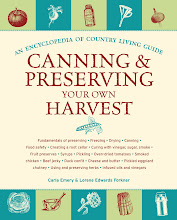Growing my own herbs and vegetables has been a bit of a domestic fantasy of mine for some time now. I’ve been held back from realizing this dream by the semi-nomadic lifestyle of a college student, along with a potentially crippling ignorance of what Carla Emery refers to as “Garden and Farm Philosophies”—until now.
“If you think of agriculture as a religion, those who use poisons and chemical fertilizers belong to one major religion; those who don’t belong to another.” She says that “the very different and very embattled religions are chemical vs. organic growers; or heirloom, open-pollinated seed savers vs. the people who are creating, defending, and using genetically modified plants.”
Certainly there are arguments available to defend each denomination depending on the values and goals of the farmer or gardener. One farmer may value the production success of genetically modified plants in order to grow mass quantities for sale. Another may prefer to promote biodiversity and soil biological activity to enrich plants rather than chemicals designed to kill pests to their crops. Carla Emery, while identifying as “organic,” provides explanations and reference texts for a variety of gardening denominations. Here are a few, if you are garden-philosophy-shopping:
Biodynamic Gardening: “Biodynamics began with a European, Rudolf Steiner (1861–1925), who taught an agriculture based on a healthy, living soil plus specific steps for a positive relationship to cosmic forces. His method works with natural life processes, supplements natural catalysts such as trace elements and enzymes, and includes unique spiritual concepts such as every grower’s property has a specific spirit presence. Their philosophical concepts are considered essential to this gardening denomination. Mainstream physical-chemical tests have demonstrated that the specialized biodynamic preparations and practices work. Biodynamic farms and farm products compete well in the organic marketplace in many countries.”
For more information, check out Biodynamic and Organic Gardening: www.biodynamic.net. Or “Biodynamic Farming & Compost Preparation” by Steve Diver of ATTRA: www.attra.org/attra-pub/biodynamic.html.
Organic Gardening: “Organic means the natural condition of living things. This gardening denomination, which refuses the use of petroleum-derived fertilizers or pest-killers, was popularized by the Rodale family’s publishing endeavors: their magazine, Organic Gardening, and the many other excellent books. Now organic agriculture is an “ecological production management system that promotes biodiversity, biological cycles, and soil biological activity.” Folks who rally under the banner of “organic” are a powerhouse of resistance to chemical agriculture. The original principles of organic gardening have been embraced by most of the other denominations listed here.
As organically grown food products become increasingly competitive with mainstream products, the U.S. federal government has increased regulation. Organic farmers meeting specific qualifications must now apply for and earn certification under the USDA’s National Organic Program (NOP). For more info, visit www.attra.org or the NOP’s web site at www.ams.usda.gov/nop.”
Carla Emery suggests reading The New Organic Manifesto (1986) by Lee Fryer, Profitable Organic Farming (1995) by John Newton, and Rodale’s All-New Encyclopedia of Organic Gardening (1997), edited by Fern Marshall Bradley and Barbara W. Ellis.
Permaculture: “During the 1980s, Bill Mollison founded the permaculture gardening denomination in Australia. It has now spread all over the world. It’s based on designing integrated systems of food production, housing, and community that are environmentally responsible. Thus it places organic agriculture in a wider context of things as they should be, both general and specific: natural gardening/farming, natural building, composting toilets, water conservation, private energy generation, etc. The audience and ambience is heavily university-style academic and scientific, but in complete opposition to mainstream chemical, corporate agriculture.
There are many good books by writers who identify with the permaculture persuasion, more than I can list here. The authors are an international assortment: Permaculture in a Nutshell (1993, UK) by Patrick Whitefield; Getting Started in Permaculture (1995, Australia); or The Future Is Abundant (1982, U.S.). That last was an early classic on permaculture by the Tilth organization, focused at the bioregional level (Pacific Northwest), now available online at www.tilthproducers.org/tfia/contents.htm. Introduction to Permaculture (1991) is by the movement’s founder, Bill Mollison with Reny Mia Slay; or read Mollison’s Permaculture: A Designer’s Manual.”
Before starting your own garden or farm, Carla Emery recommends looking into the garden philosophies that interest you. “Each gardening denomination has developed an associated array of marketers pushing soil amendments, testing services, or other products to that clientele. ATTRA warns that some products have been demonstrated by scientific testing to actually do more harm than good when applied to soil or plants. On the other hand, research has shown others to be terrific helps. Make careful choices.”
Of course, there are plenty of factors that should contribute to your choice in garden philosophy. Your budget and space available as well as personal values might serve as markers for your personal path to garden enlightenment. Once you have chosen, Carla Emery suggests you tackle the position, arrangement, timing and the many other decisions involved in laying out your garden.








No comments:
Post a Comment